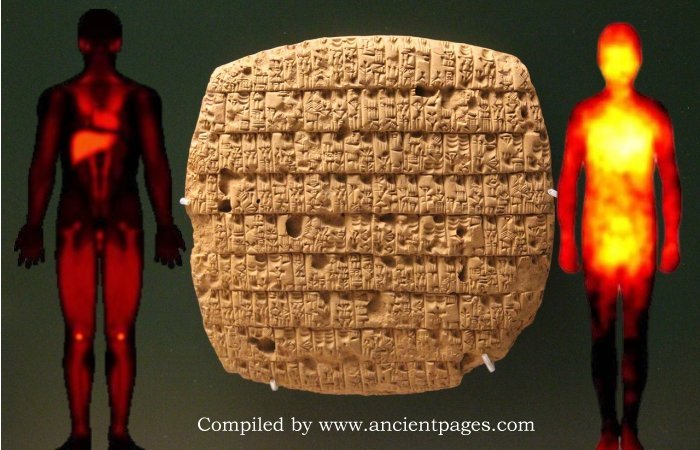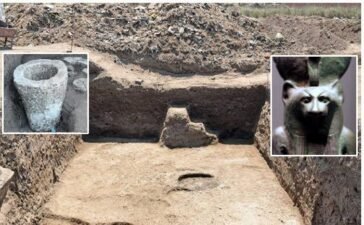Conny Waters – AncientPages.com – Emotions are often experienced physically, manifesting as sensations like a heavy heart or butterflies in the stomach. This phenomenon seems intrinsic to human nature, but it raises the question of whether these feelings have always been expressed in the same manner throughout history.
To explore this, a multidisciplinary team of researchers conducted an extensive study on how people from ancient Mesopotamia (present-day Iraq) experienced emotions physically thousands of years ago. They analyzed one million words written in the ancient Akkadian language from 934–612 B.C., preserved as cuneiform scripts on clay tablets, to uncover insights into historical expressions of emotion.
“Even in ancient Mesopotamia, there was a rough understanding of anatomy, for example, the importance of the heart, liver, and lungs,” says Professor Saana Svärd of the University of Helsinki, an Assyriologist who is leading the research project. One of the most intriguing findings relates to where the ancients felt happiness, which was often expressed through words related to feeling ‘open,’ ‘shining’ or being ‘full’––in the liver.
“If you compare the ancient Mesopotamian bodily map of happiness with modern bodily maps [published by fellow Finnish scientist, Lauri Nummenmaa and colleagues a decade ago], it is largely similar, with the exception of a notable glow in the liver,” says cognitive neuroscientist Juha Lahnakoski, a visiting researcher at Aalto University.
Contrasting emotional experiences between modern humans and ancient civilizations, such as the Mesopotamians, reveal intriguing differences. Research indicates that contemporary individuals typically feel anger in the upper body and hands.
Modern and Mesopotamian people experience love in a rather similar way. In Mesopotamia, love is particularly associated with the liver, heart and knees. Credit: Modern/PNAS: Lauri Nummenmaa et al., Mesopotamian: Juha Lahnakoski.
In contrast, Mesopotamians reported experiencing anger primarily in their feet, describing it as feeling ‘heated’ or ‘enraged.’ On the other hand, the emotion of love shows more similarities across time. Both modern humans and Neo-Assyrians experience love similarly; however, in Mesopotamia, this emotion is notably linked to sensations in the liver, heart, and knees.
“It remains to be seen whether we can say something in the future about what kind of emotional experiences are typical for humans in general and whether, for example, fear has always been felt in the same parts of the body. Also, we have to keep in mind that texts are texts and emotions are lived and experienced,” says Svärd.
Researchers emphasize the importance of distinguishing between modern body maps, based on self-reported bodily experiences, and those of Mesopotamians, which relied solely on linguistic descriptions. In ancient Mesopotamia (3000–300 B.C.), literacy was uncommon; cuneiform writing was primarily produced by scribes and accessible mainly to the affluent. These clay tablets encompassed a diverse range of texts, including tax lists, sales documents, prayers, literature, and early historical and mathematical works.
Modern man experiences anger in the upper body and hands. In Mesopotamia, anger was associated specifically with the feet. 2024. Credit: Modern/PNAS: Lauri Nummenmaa et al., Mesopotamian: Juha Lahnakoski.
This study marks a novel approach to Ancient Near Eastern texts by quantitatively associating emotions with body parts—a method that could be extended to other languages in future research. According to Svärd, this technique may offer valuable insights into intercultural variations in emotional experiences.
See also: More Archaeology News
The corpus linguistic method employed here has been refined over many years at the Center of Excellence in Ancient Near Eastern Empires (ANEE), under Svärd’s leadership. The next phase involves examining an English corpus from the 20th century containing 100 million words. Additionally, Finnish data will also be analyzed.
The research team includes Svärd and Lahnakoski alongside Professor Mikko Sams from Aalto University, Ellie Bennett from the University of Helsinki, Professor Lauri Nummenmaa from the University of Turku, and Ulrike Steinert from Johannes Gutenberg-Universität Mainz.
The study was published in the journal iScience
Written by Conny Waters – AncientPages.com Staff Writer









